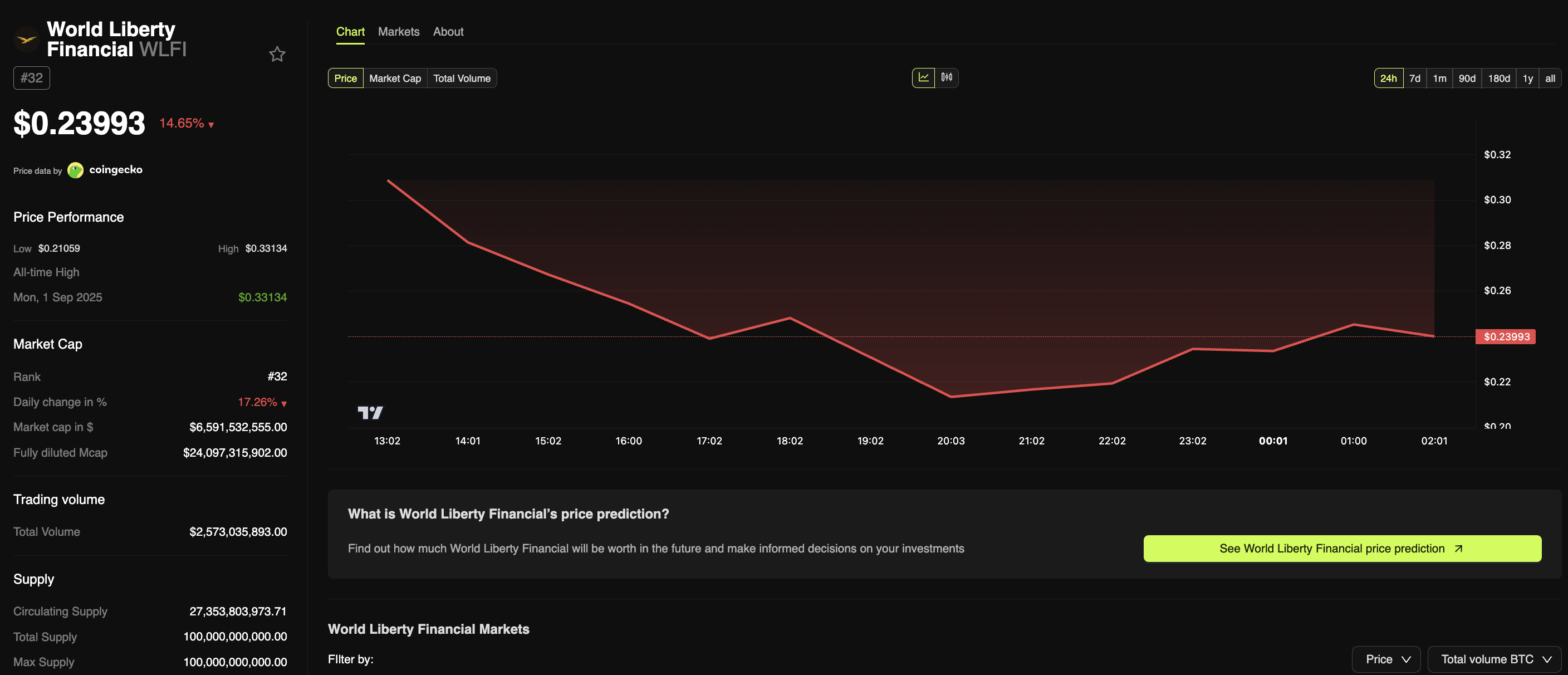WLFI’s Bold Buyback Strategy: Using 100% of POL Fees to Buy and Burn Tokens
WLFI just dropped a deflationary bomb—every cent of POL fees now fuels their aggressive buyback-and-burn engine.
How It Works: No Partial Plays
The protocol doesn’t dabble in half-measures. Transaction fees? They’re not recycled or stashed. Instead, 100% gets funneled straight into buying back WLFI tokens off the open market—then sending them straight to the burn address.
Why It Matters: Scarcity Over Hype
This isn’t another vague roadmap promise. It’s a real-time deflationary mechanism designed to systematically reduce supply while creating consistent buy pressure. No gimmicks, no veiled inflation—just a clean, transparent burn.
Long-Term Game: Aligning Incentives
Token holders win twice: reduced circulating supply supports price floors, while the constant burn turns each remaining token into a scarcer asset. It’s like a corporate share buyback—but without the Wall Street executives cashing out options at the top.
One cynical take? In a space where “tokenomics” often means “how we print more,” WLFI’s move is a refreshing—if brutally simple—antidote. Now let’s see if the market actually notices.
Price-Boosting Mechanism
The World Liberty Financial (WLFI) community unveiled a crucial proposal: WLFI will use 100% of the fees generated from protocol-owned liquidity (POL) to repurchase WLFI on the open market. The repurchased tokens will then be sent to a burn address, permanently removing them from circulation.
This proposal aims to directly reduce circulating supply, increase the relative benefits for long-term holders, and turn protocol usage into a deflationary driver under the principle of “the more you use, the more gets burned.”

WLFI only recently began trading. Data from BeInCrypto Market shows the token’s maximum supply is capped at 100 billion, with around 24.7 billion WLFI currently in circulation. WLFI is trading at $0.24, down 26% from its all-time high just a few hours earlier.
From a tokenomics perspective, the buyback-and-burn strategy funded by POL fees creates a positive feedback loop. As protocol usage increases, POL fees grow, leading to greater buybacks and a steadily shrinking circulating supply. This dynamic could generate long-term price support if demand remains stable or rises.
By restricting the mechanism to protocol-owned liquidity, WLFI also avoids harming third-party LPs and preventing conflicts of interest. Furthermore, the on-chain transparency of burn transactions provides a strong LAYER of accountability for community oversight.
Of course, not everyone is very optimistic about the effectiveness of this proposal. The price and the valuation issues from launch have caused some community members to lose faith in the project.
“You’ve defrauded millions of people around the world and are now living in luxury in America with that money. This project will mark the downfall of the TRUMP family, and in this market, no one will ever trust your words again.” An X user directly blamed Donald Trump.
Terra Luna Also Had the Buyback System
There are potential risks. First, the scale of POL fees in the early stages might be relatively small. If low trading volumes on POL pools, the buybacks may not meaningfully impact WLFI’s circulating supply.
Second, allocating 100% of fees to burning may strain the treasury’s operating and reserve funds. If the protocol fails to create alternative revenue sources, this could impact product development and reinvestment capacity.
In addition, buyback operations could trigger high volatility during periods of low liquidity, creating opportunities for front-running or short-term manipulation. Therefore, clear rules on execution methods, reporting mechanisms, and fallback strategies in case of declining POL fees are necessary to ensure sustainable implementation.
The self-buyback strategy is ㅜ in the cryptocurrency market, as Chainlink (LINK), Pump.fun (PUMP), and others have already shown.
However, not all projects that apply it are successful, and Terra Luna 2.0 is a typical example. The impact of the previous crash in 2022, combined with an ample total supply and a low burn rate, makes it difficult for the LUNA 2.0 price to recover.
Therefore, the WLFI community needs to add guardrails on treasury governance, transparent buying mechanisms, and a clear roadmap to become a sustainable measure. The program can boost tokenomics and demonstrate effective community governance if these are completed.

